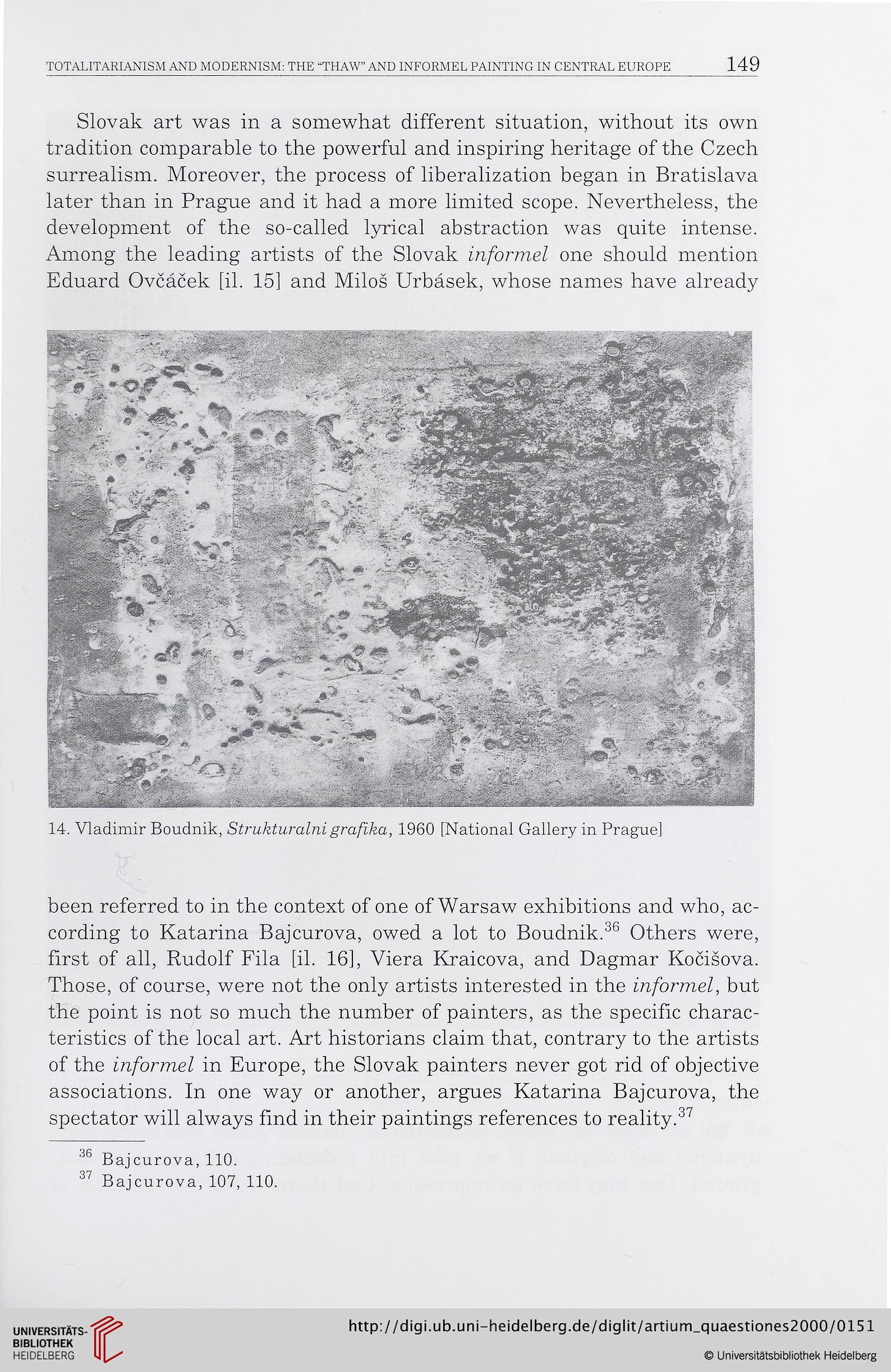TOTALITARIANISM AND MODERNISM: THE “THAW” AND INFORMEL PAINTING IN CENTRAL EUROPE
149
Slovak art was in a somewhat different situation, without its own
tradition comparable to the powerful and inspiring héritage of the Czech
surrealism. Moreover, the process of liberalization began in Bratislava
later than in Prague and it had a more limited scope. Nevertheless, the
development of the so-called lyrical abstraction was quite intense.
Among the leading artists of the Slovak informel one should mention
Eduard Ovcâcek [il. 15] and Milos Urbâsek, whose naines hâve already
14. Vladimir Boudnik, Strukturalni grafika, 1960 [National Gallery in Prague]
been referred to in the context of one of Warsaw exhibitions and who, ac-
cording to Katarina Bajcurova, owed a lot to Boudnik.36 Others were,
fïrst of ail, Rudolf Fila [il. 16], Viera Kraicova, and Dagmar Kocisova.
Those, of course, were not the only artists interested in the informel, but
the point is not so much the number of painters, as the spécifie charac-
teristics of the local art. Art historians claim that, contrary to the artists
of the informel in Europe, the Slovak painters never got rid of objective
associations. In one way or another, argues Katarina Bajcurova, the
spectator will always fmd in their paintings references to reality.37
36 Bajcurova, 110.
37 Bajcurova, 107, 110.
149
Slovak art was in a somewhat different situation, without its own
tradition comparable to the powerful and inspiring héritage of the Czech
surrealism. Moreover, the process of liberalization began in Bratislava
later than in Prague and it had a more limited scope. Nevertheless, the
development of the so-called lyrical abstraction was quite intense.
Among the leading artists of the Slovak informel one should mention
Eduard Ovcâcek [il. 15] and Milos Urbâsek, whose naines hâve already
14. Vladimir Boudnik, Strukturalni grafika, 1960 [National Gallery in Prague]
been referred to in the context of one of Warsaw exhibitions and who, ac-
cording to Katarina Bajcurova, owed a lot to Boudnik.36 Others were,
fïrst of ail, Rudolf Fila [il. 16], Viera Kraicova, and Dagmar Kocisova.
Those, of course, were not the only artists interested in the informel, but
the point is not so much the number of painters, as the spécifie charac-
teristics of the local art. Art historians claim that, contrary to the artists
of the informel in Europe, the Slovak painters never got rid of objective
associations. In one way or another, argues Katarina Bajcurova, the
spectator will always fmd in their paintings references to reality.37
36 Bajcurova, 110.
37 Bajcurova, 107, 110.




